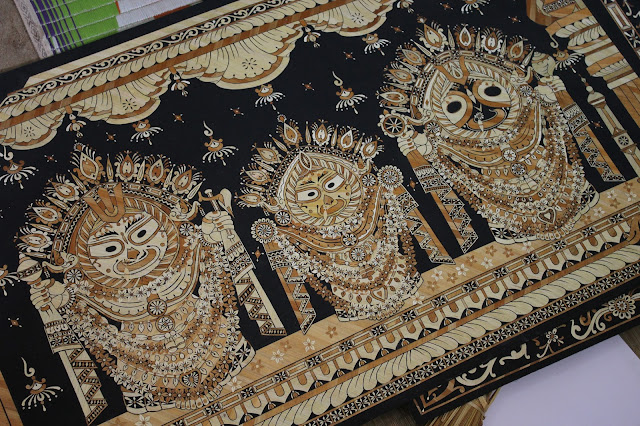 |
| Rice straw painting of Holy Trinity |
 |
| Women practicing the craft at Kalyani Straw Craft Centre |
The craft is time-consuming, he says, while demonstrating the tedious process. Each strand of straw is carefully split into two halves with the help of a knife. He then flattens it with a pestle and pastes it on a sheet of A4 size paper. After drying, the paper is cut into desired shapes and sizes for the straw paintings. Each A4 size paper requires at least 25 straw strands, says the master craftsman. The subject of the painting is drawn on a butter paper, which is then replicated on the straw sheet. The design is then meticulously cut out in thousands of pieces of designs and pasted on the canvas, which is made of thin plywood sheet covered with black velvet. "Since the colour of the straw is golden, the painting comes out beautifully on a black canvas," he says, adding that heaps of straw are left to dry in sun for five to six months before it attains a shiny golden hue and is ready for use.
 |
| The raw materials for painting |
 |
| Painting of Kandarpa Rath (Cupid Chariot) |

No comments:
Post a Comment
Thank You for Reading.